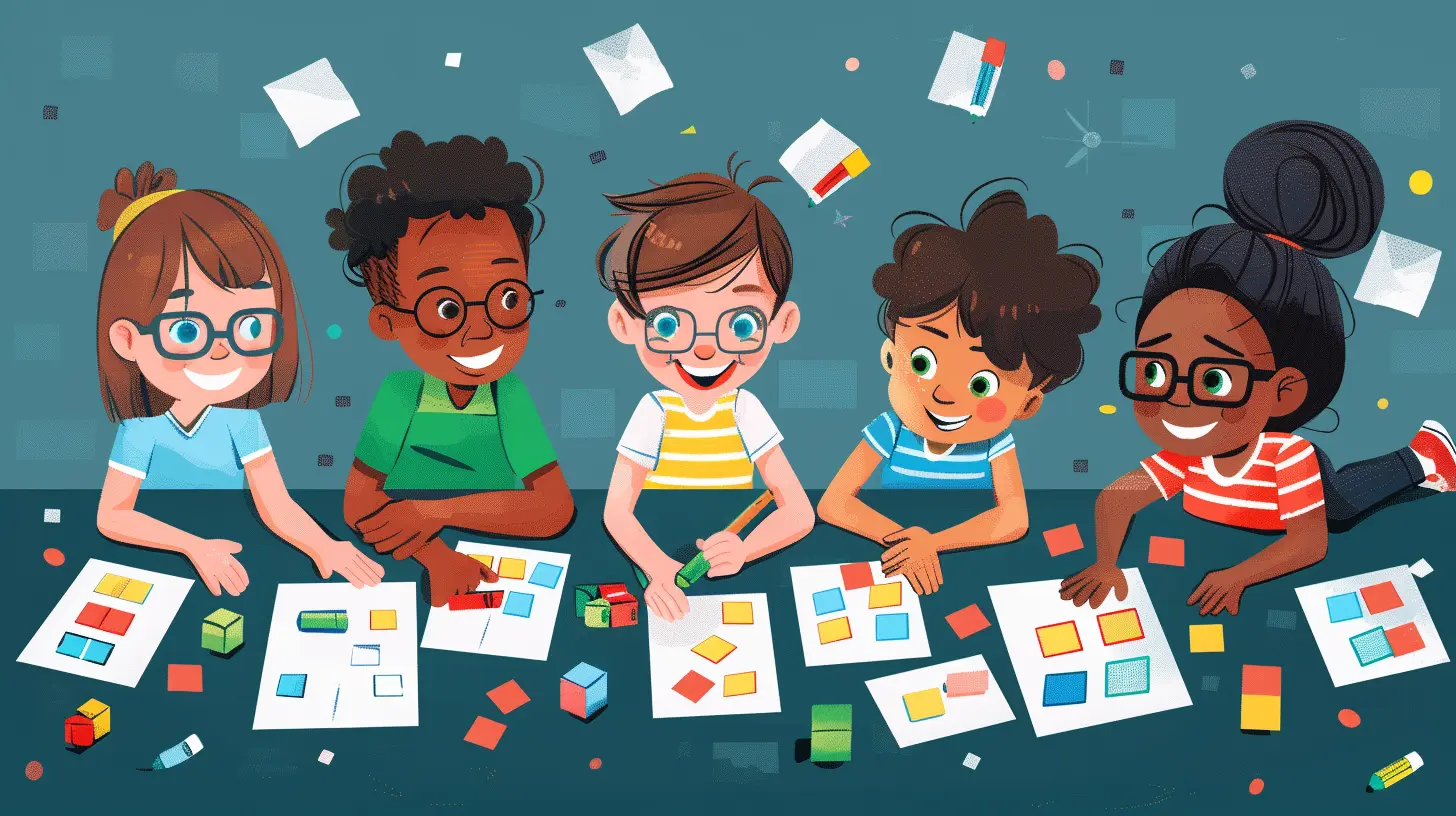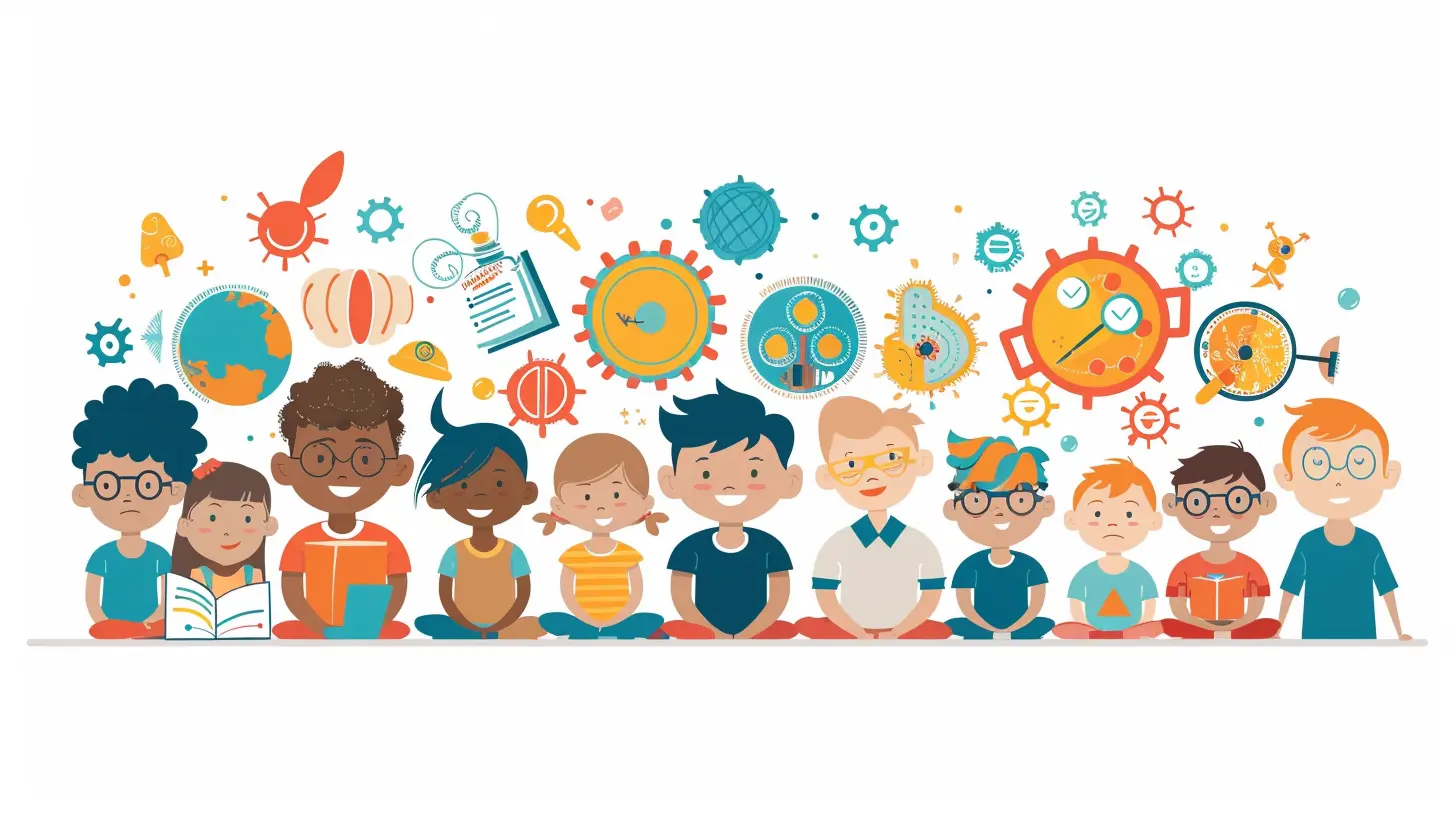Adapting STEM Lessons for Inclusive Learning
14 July 2025
STEM (Science, Technology, Engineering, and Mathematics) is the backbone of modern education, shaping the innovators and problem-solvers of tomorrow. But here's the question—are our STEM lessons truly accessible to all students? The truth is, not every learner fits into the traditional mold. Some students face challenges that make conventional STEM education difficult to grasp.
That’s where inclusive learning comes in. Adapting STEM lessons for different learning needs ensures that everyone, regardless of their physical, cognitive, or emotional abilities, gets a fair shot at success. In this article, we’ll dive into strategies that make STEM lessons engaging and accessible for all students. 
Why Inclusive STEM Education Matters
Let’s face it—not every student learns the same way. Some grasp concepts quickly, while others need additional support. Inclusive STEM education ensures that students with disabilities, learning challenges, or diverse backgrounds get the same opportunities as their peers.By making STEM lessons adaptable, we’re not just helping students succeed academically—we’re also fostering critical thinking, creativity, and social skills. When students feel included, they stay motivated and engaged, leading to better learning outcomes. 
Challenges in Traditional STEM Learning
Before we dive into solutions, it's important to identify the barriers many students face in the STEM classroom:1. Physical Barriers
Students with mobility impairments may struggle with hands-on experiments or lab work. Traditional classrooms aren’t always designed with accessibility in mind.2. Cognitive Barriers
STEM subjects often involve complex problem-solving, abstract reasoning, and heavy reliance on numbers. Students with learning disabilities, ADHD, or autism may have difficulties processing information in conventional STEM lessons.3. Language Barriers
For students who are English language learners (ELLs), STEM lessons can be tough. Technical vocabulary and complex instructions can be confusing, slowing down their learning process.4. Gender and Socioeconomic Gaps
Girls and students from lower-income backgrounds are often underrepresented in STEM fields. Societal biases and lack of resources can discourage them from pursuing STEM education and careers.
Strategies to Make STEM Lessons Inclusive
Now that we’ve covered the challenges, let’s talk about solutions. Here are some proven strategies to make STEM education more inclusive and engaging for all students.1. Use Multiple Teaching Methods
Not all students learn best through lectures or reading-heavy materials. Try incorporating:- Visual aids like videos, diagrams, and charts.
- Hands-on activities for kinesthetic learners.
- Group discussions to encourage collaboration.
- Project-based learning to give real-world applications to concepts.
The more variety in your teaching methods, the more students you’ll reach.
2. Incorporate Assistive Technology
Technology can be a game-changer for inclusive STEM learning. Here are some tools that can help:- Speech-to-text software for students who struggle with writing.
- Screen readers for visually impaired students.
- 3D printing to create tactile learning materials.
- Augmented reality (AR) or virtual reality (VR) for interactive learning experiences.
These tools help bridge gaps and make STEM subjects more accessible.
3. Simplify Language Without Losing Depth
STEM topics can be difficult, so keeping explanations clear and simple helps students who struggle with comprehension.- Avoid unnecessary jargon—explain terms in everyday language.
- Use real-life analogies to break down complex concepts.
- Provide glossaries of key STEM vocabulary.
By making STEM language more digestible, you create an environment where more students can succeed.
4. Foster a Growth Mindset
A growth mindset encourages students to see challenges as opportunities rather than obstacles. This is particularly important in STEM, where failure is often part of the learning process.- Praise effort over results.
- Encourage students to embrace mistakes as learning opportunities.
- Share stories of famous scientists and engineers who overcame failures.
When students believe they can improve with effort, they’re more likely to stay engaged and push through difficult concepts.
5. Provide Alternative Assessment Methods
Traditional tests and quizzes don’t always reflect a student’s true understanding. Offering alternative assessments can help students demonstrate their knowledge in ways that suit them best.- Oral presentations for those who struggle with written exams.
- Portfolio-based assessments showcasing projects and assignments.
- Practical demonstrations allowing students to show their learning hands-on.
By diversifying assessment methods, you give every student a fair chance to succeed.
6. Create Inclusive Group Projects
STEM is all about teamwork, just like in the real world. But group work should be structured thoughtfully to be truly inclusive.- Mix students of different skill levels so they can learn from each other.
- Assign roles based on strengths—some may excel in research, others in hands-on work.
- Ensure equal participation by setting clear group expectations.
By fostering collaboration in an inclusive way, students develop teamwork and communication skills, which are just as valuable as technical knowledge.
7. Make Classrooms and Labs Accessible
Physical accessibility is crucial for inclusive STEM learning. Here are some ways to ensure all students can participate:- Arrange desks and equipment for wheelchair accessibility.
- Provide adaptive lab equipment, such as large-grip tools or one-handed microscopes.
- Ensure clear written and verbal instructions for students with hearing impairments.
A fully accessible classroom ensures no student is left out of hands-on experiments and activities.
8. Introduce Diverse Role Models
Representation matters. If students see people who look like them succeeding in STEM fields, they'll be more likely to believe in their own potential.- Highlight achievements of female scientists, engineers, and innovators.
- Showcase STEM professionals from diverse cultural and socioeconomic backgrounds.
- Invite guest speakers to share their experiences in STEM careers.
Diverse role models inspire students to dream bigger and break barriers. 
The Future of Inclusive STEM Education
The world is changing, and education must change with it. As technology advances, new tools will continue to emerge, making STEM subjects even more accessible. More schools are integrating Universal Design for Learning (UDL) principles, which promote flexible teaching methods that benefit all students.Educators, parents, and policymakers must work together to ensure that no student is left behind in STEM education. By making small changes in how we teach, assess, and support students, we can create a generation of problem-solvers who use their unique strengths to shape the future.
Final Thoughts
STEM education is meant to prepare students for the challenges of tomorrow. But if we don’t make it accessible to all, we’re leaving too many brilliant minds behind. Inclusive STEM learning isn’t just about fairness—it’s about unlocking potential.By adapting lessons, embracing diverse learning styles, and fostering an inclusive environment, we can help every student develop a passion for STEM. And who knows? Your efforts in the classroom today might just spark the next game-changing scientist or engineer!
all images in this post were generated using AI tools
Category:
Inclusive EducationAuthor:

Fiona McFarlin
Discussion
rate this article
1 comments
Buzz McGinn
Thank you for highlighting the importance of inclusivity in STEM education. Your insights inspire educators to create engaging and accessible learning experiences, ensuring every student feels valued and empowered.
July 22, 2025 at 4:12 AM

Fiona McFarlin
Thank you for your kind words! I'm glad the article resonated with you and can inspire more inclusive STEM education.


